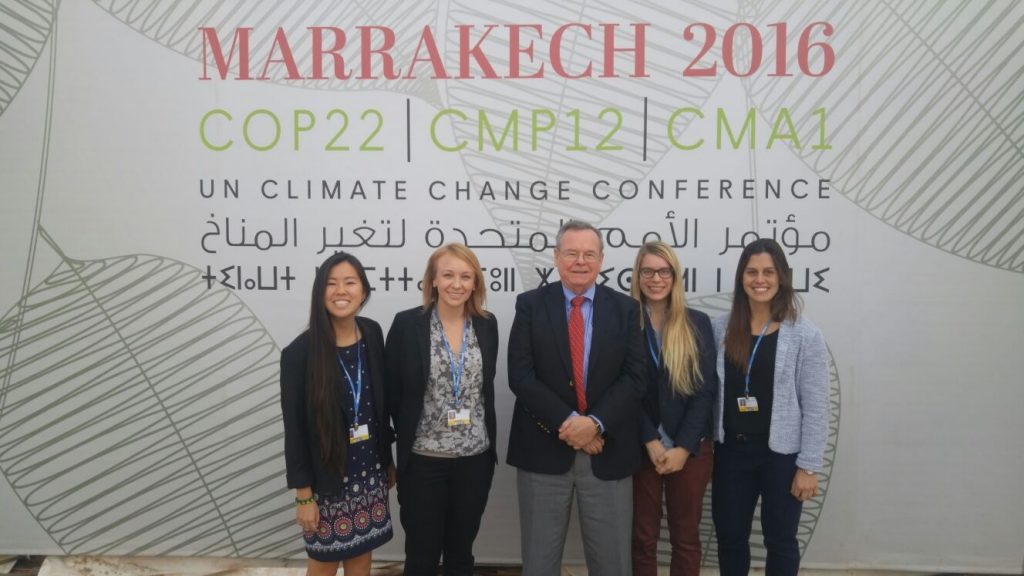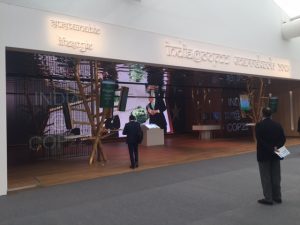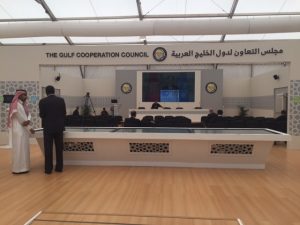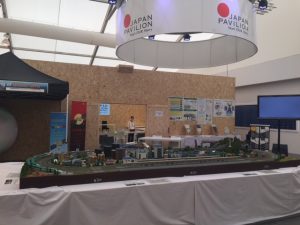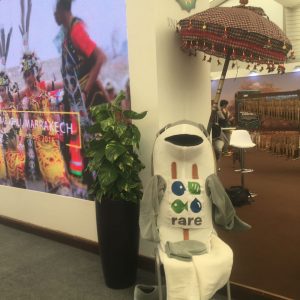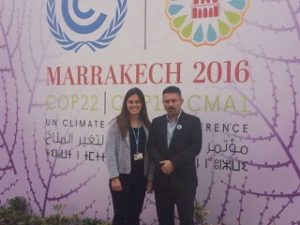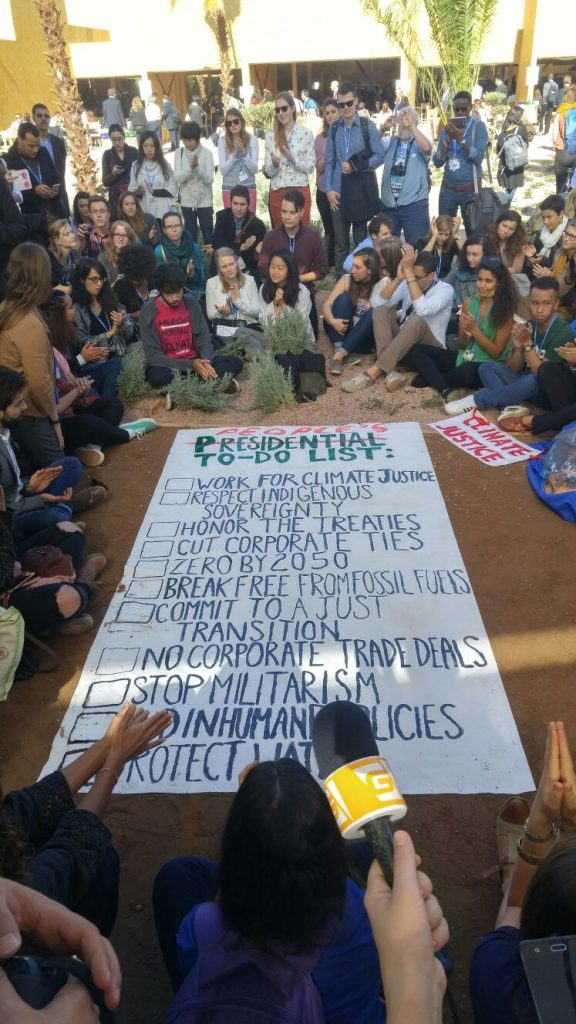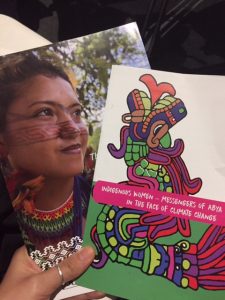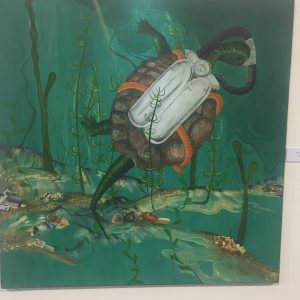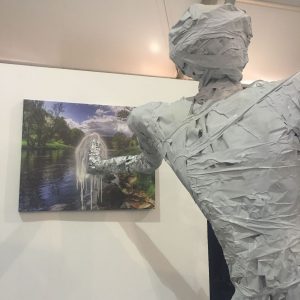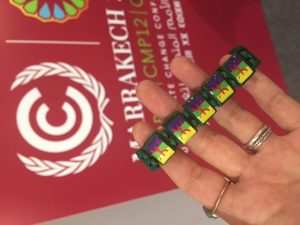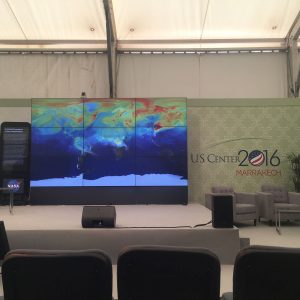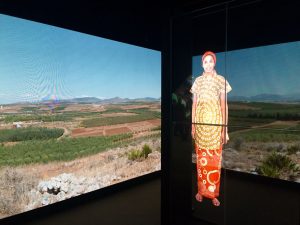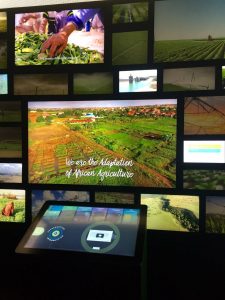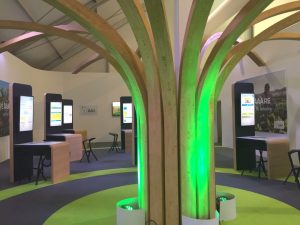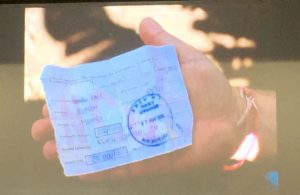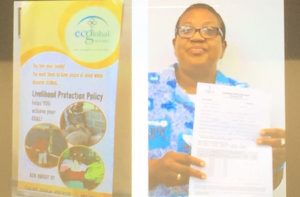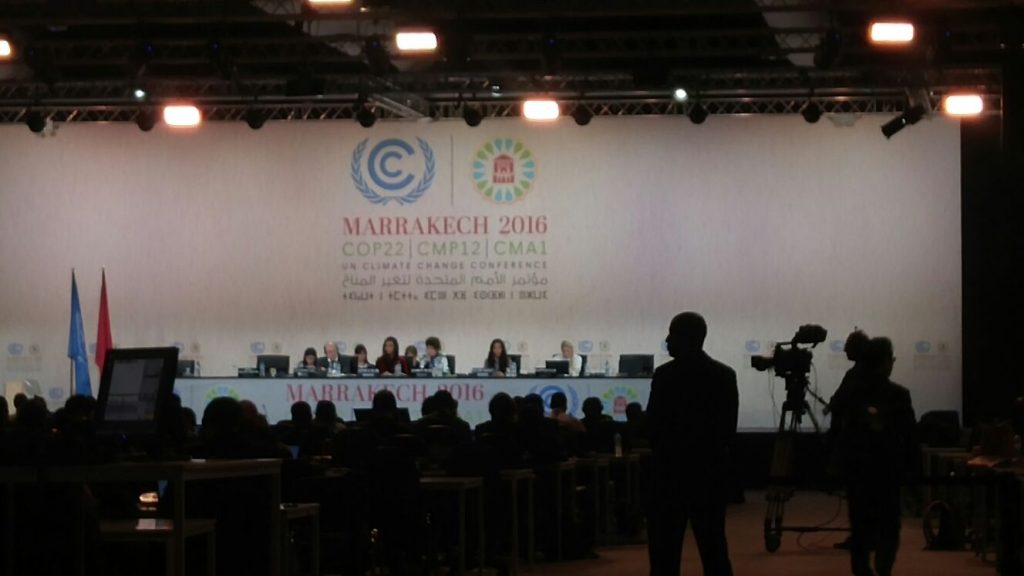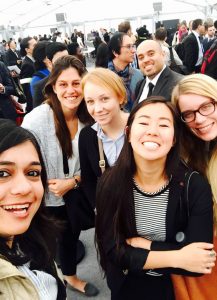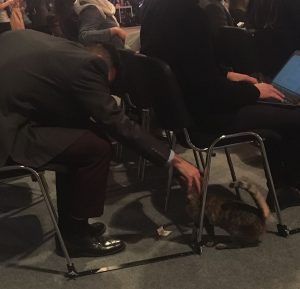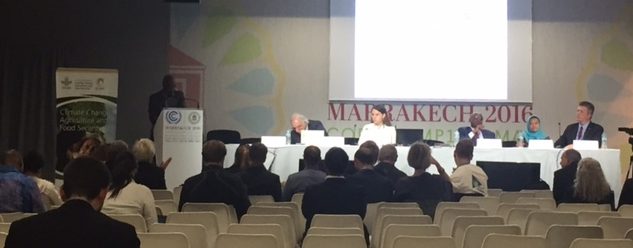We’ve wrapped up our penultimate day at the COP for the Week 1 crew, and it was a packed one. The day started out in the Green Zone, which is the zone next to the accredited zone that is (more or less) open to the public. I barely got to explore it, but it’s huge and there are tons of art exhibits, companies displaying their sustainability accomplishments, and several talks open to the public. One of those was given by a Duke PhD alum, Kyle Van Houtan, who is now the director of science at the Monterrey Bay Aquarium. The event mixed a focus on the impacts of climate change on oceans with the role of faith-based communities, which was an insightful combination.
Right after that, we had a sit-down meeting with Nathan Hultman, Associate Professor at University of Maryland, a non-resident Senior Fellow at the Brookings Institution, and formerly of the White House’s Council on Environmental Quality. This was an incredible and nourishing conversation about the outlook for climate change policy in the US after this week’s election outcome. While so many of the facts are sobering, Nate gave us a few reasons to look for a silver lining (most of those reasons have to do with the fact that Trump doesn’t actually seem that motivated to do much on climate change, or potentially that his innate desire to “win” at everything could help spur us into a “renewable energy technology arms race” with China). It’s far too early to be able to make any conclusions, but it was helpful to hear an insider’s perspective.
We split up the rest of the day to follow the remaining negotiating sessions for our particular issues. I met again with Kyle Van Houtan and then the delegation from the University of Michigan before ending the day at the APA Contact Meeting, where the APA co-chairs presented for the first time the “Draft conclusion” for Parties to react to. It seems that more consultations are needed, particularly on the issue of the Global Stocktake, but Parties seem ready to finish the conclusions by the closing of the APA on Monday evening. Conversations are set to continue in Bonn in May, with a number of technical workshops and papers being convened in the meantime to better inform Parties about the options (great call to action for other RINGO researchers!)
For dinner, I finally got to try the food stalls in the Jemaa el Fna square. This is the center of Morocco, and is the busiest and most active square I’ve every seen. There are tons of food stalls with amazing food for very cheap (you just have to be careful to go to the right one!). I got most of the food below for the equivalent of about $6 — great end to the day!
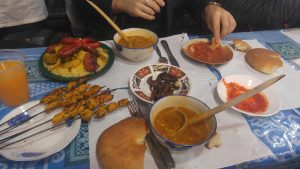
Tanya: This morning, we started the day by attending a side event organised by a Duke alum on the value of oceans, where the conversation was framed in the intersection of faith and science, and the panel pointed out examples of religious leaders championing the cause of climate change and the impact this could have within their community. We followed this up with an informal conversation with Nate Hultman from UMD’s Centre for Global Sustainability which focused on the potential impacts of a Trump administration – more in a blog post on this later!
This afternoon, I attended a second “semi-closed” meeting of the AOSIS Mitigation team, where they had made little progress on deciding upon essential features of NDCs. I spent the early evening figuring out a food vendor for my client’s events tomorrow morning, before attending a side event on NAPs and community engagement which highlighted joint principles of adaptation put together by Southern Voices, and how these translate in Kenyan, Sri Lankan and Nicaraguan contexts.
Megan: Today started off attending a panel titled ‘The Consequences of Climate Change to the Ocean and the Implications of Human Abuse’ featuring Duke alum, Kyle Van Houtan. It was inspiring to see someone going on to do great things with their Duke degree and to think that maybe one day some of us will be here presenting our important climate work and meeting with future students. I’ve found that several of the side events so far are not necessarily what their title implies, and it was interesting and unexpected that his event featured the role of religion in environmental protection. After the panel I chatted with Kyle for a bit and then with rest of the panel for quite a while as all their work and presentations were so different that any angle I have heard on climate here so far (and seemed potentially questionable). They were all extremely fascinating and one put me on to further events to attend later in the year in Raleigh. After this I took the afternoon a little bit slow and did some work on a paper for my client before attending an event on avoiding irreversible polar threshold, which was largely not about the poles but still interesting.
Jade: My last day at the COP was, again, busy but full of insight and thought-provoking conversations (although not altogether positive in nature). Members of the RINGO constituency met with Nate Hultman, who gave great insider insight on what a Trump presidency could mean for the U.S and the world. Although not exactly uplifting, I left the conversation feeling just a bit more reassured than I had been before. I spent the rest of my day in informal agriculture negotiations (pictured). To be able to be in the room, watching the process of actual draft text being negotiated by parties, was simultaneously fascinating and frustrating. In the final consultation with SBSTA, no substantive agreement was reached at all and the text they were working on was subsequently thrown out (a couple parties objected to its status as an annexed non-paper). This was truly a frustrating result and difficult for me, as a first COP-goer, to understand. I hope to see track this in future negotiations (the closest being SBSTA workshop 46 in Bonn) and see more progress (or at least potential for progress).
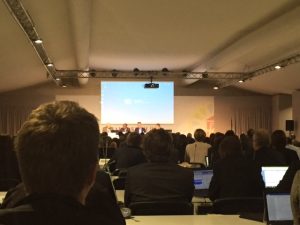
Delfina: My day started at side event where Kyle Van Houtan was a panelist. They addressed topics on the consequences of climate change and human abuse on ocean ecosystems. It was a very interesting talk as I got to listen to the effects of climate change from a religious perspective.
After I attended a press briefing hosted by the Climate Action Network. There, Mr. Singh, Global Lead on Climate Change, ActionAid International gave updates on the discussion around Loss and Damage and the Warsaw International Mechanism for Review and Adaptation.
After I headed to the AILAC pavilion where I spend most of the afternoon speaking and interviewing multiple negotiators and persons of interest. Some of the interviews and press releases I have collaborated with can be found at www.conexioncop.com
My time in the AILAC office was followed by a side event on business planes, NDCs and transforming the power paradigm. It was a great experience to listen to such a great panel: representatives from Philips Lighting, Business Council for Sustainable Energy, WRI, amongst other.
Close to the end of the day, I attended the meeting where they discussed the APA general conclusions of article 3-8. I ended my evening with a very pleasant and insightful talk with Rosa Morales, head of the climate division and head negotiator for the Peruvian delegation.
